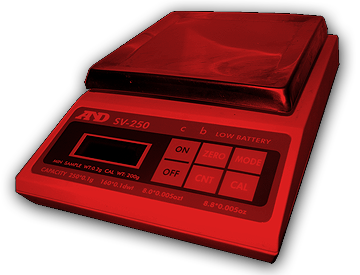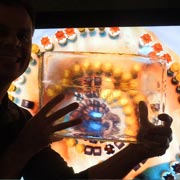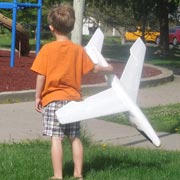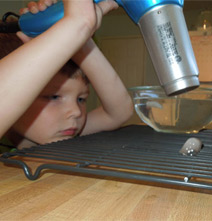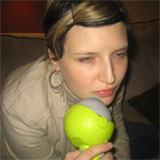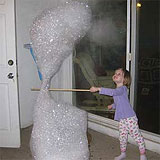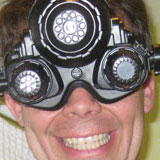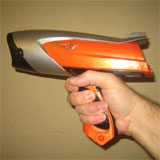Trying to Make Clear Ice - page 4
The plastic bottle degassing didn't work. The ice was still distorted with a mass of frozen air bubbles.
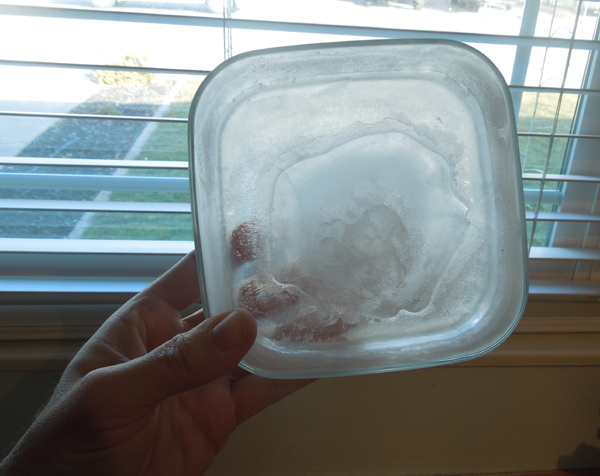
The next thing I tried was to disturb the surface of the water with a rotating paddle as it cooled. This might stop the ice from freezing over the surface.
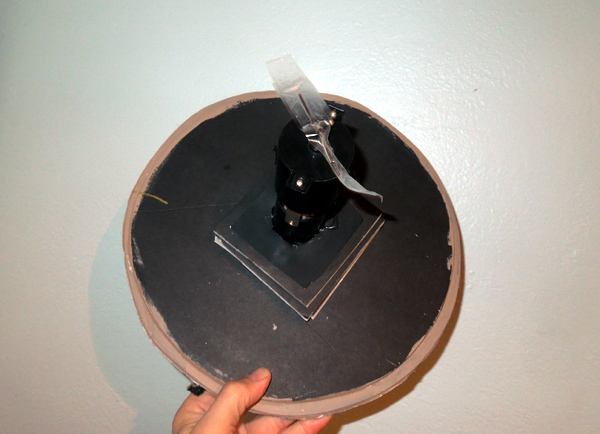
I borrowed the battery-powered disco-ball motor from Thunder Mountain (part of the Disneyland Costume). This is a slow motor, rotating about 10 times per minute. I added some paddles made of scotch tape.

The blades would sweep constantly through the water, moving it around and breaking up top ice that might form.
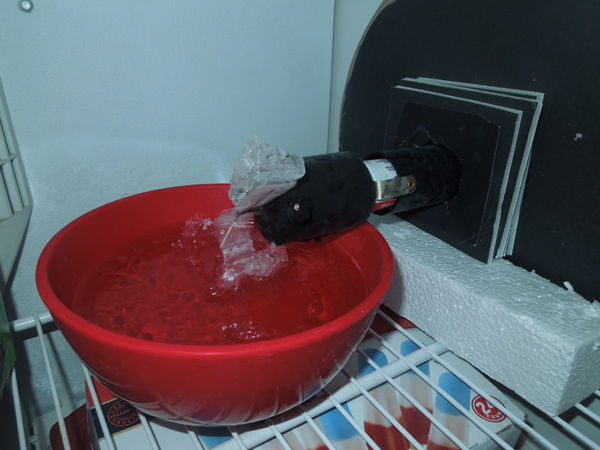
After a few hours, ice started forming on the wings. It was apparent that this wasn't going to work.

The ice looked interesting, but the surface did eventually freeze, trapping air below and giving a clouded result.

My next idea was to keep the good ice around the edges, and remove by surgery the center water reservoir. I let a bowl of water freeze a bit, then sliced open the top with a serrated knife.
At this point in the freezing process, clear solid ice had formed along the edges of the bowl. I poured out the remaining water and replaced it with a new batch of distilled water. If I did this several times, maybe I could work my way to an entire a whole bowl of clear ice.

The first two rounds of puncturing and refreezing worked pretty well.
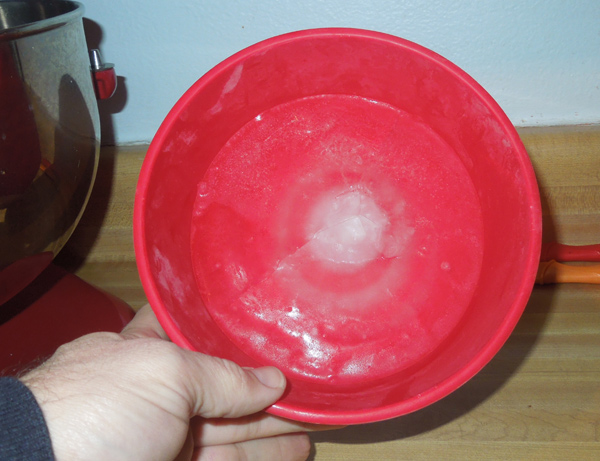
Unfortunately, I fell asleep and neglected to replace the water a third time. The center of the ice froze up solid, trapping gas and expanding outward just a bit. This might be worth repeating.
Around this time, I started to search around looking at experiments that other people had done to get clear ice. I prefer to invent solutions myself, but I had been trying for more than a month, and I was ready for some external input.
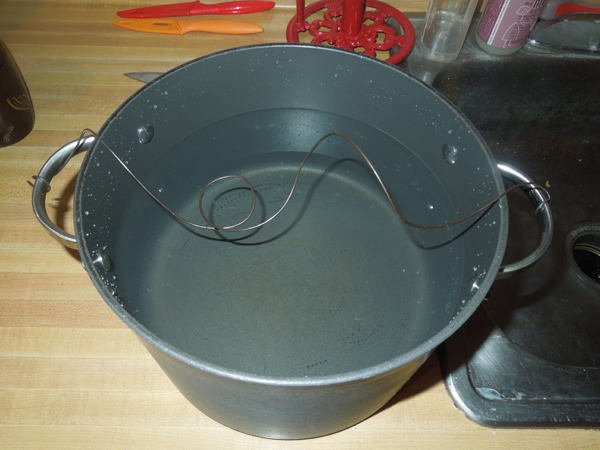
The first thing I noticed was that a few sources had mentioned that the pursuit of clear ice is easier with a warmer freezer. That is, a freezer which is -1° C is better for making clear ice than a freezer at -20° C.
Some sites even recommended buying a little dorm fridge to make ice in that freezer, because it would be more likely to be only a few degrees below zero.
With this in mind, I raised the temperature of my freezer at home before continuing my experiments.
The next thing I read was a cool work-around to the trapped air problem.
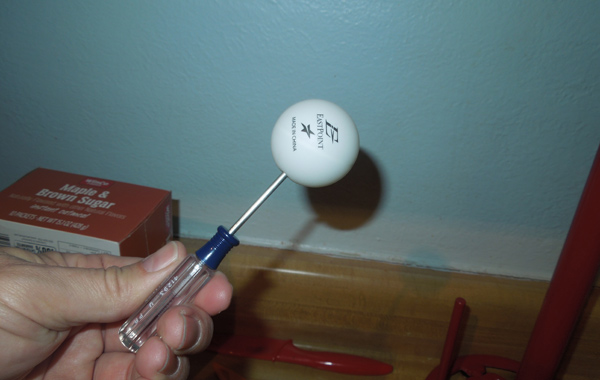
This guy Craig Belon realized that he could avoid trapping air and impurities in his ice by establishing two distinct sections of ice. He suspended a ball-shaped ice mold above a big pot of water. The ice mold would be exposed to the cold air in the freezer, but a small hole at the bottom would keep a path open to provide an exit for the gasses and expansion. The pot would be a heat sink for the ice ball.
I don't have an ice ball mold, so I tried just using a ping-pong ball with a hole poked into it. The ball has to be filled with water and then suspended above the water, with it's fill hole beneath the surface.
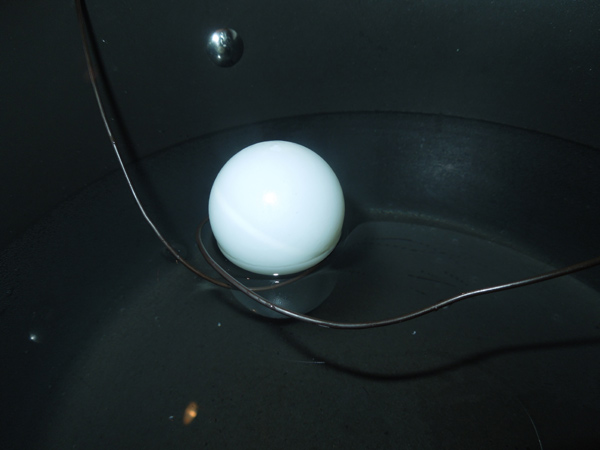
Please Read Page 5 of Making Clear Ice >
Cockeyed home page | Contact | Terms and Conditions | Updated January 27, 2014 Copyright 2014 Cockeyed.com


